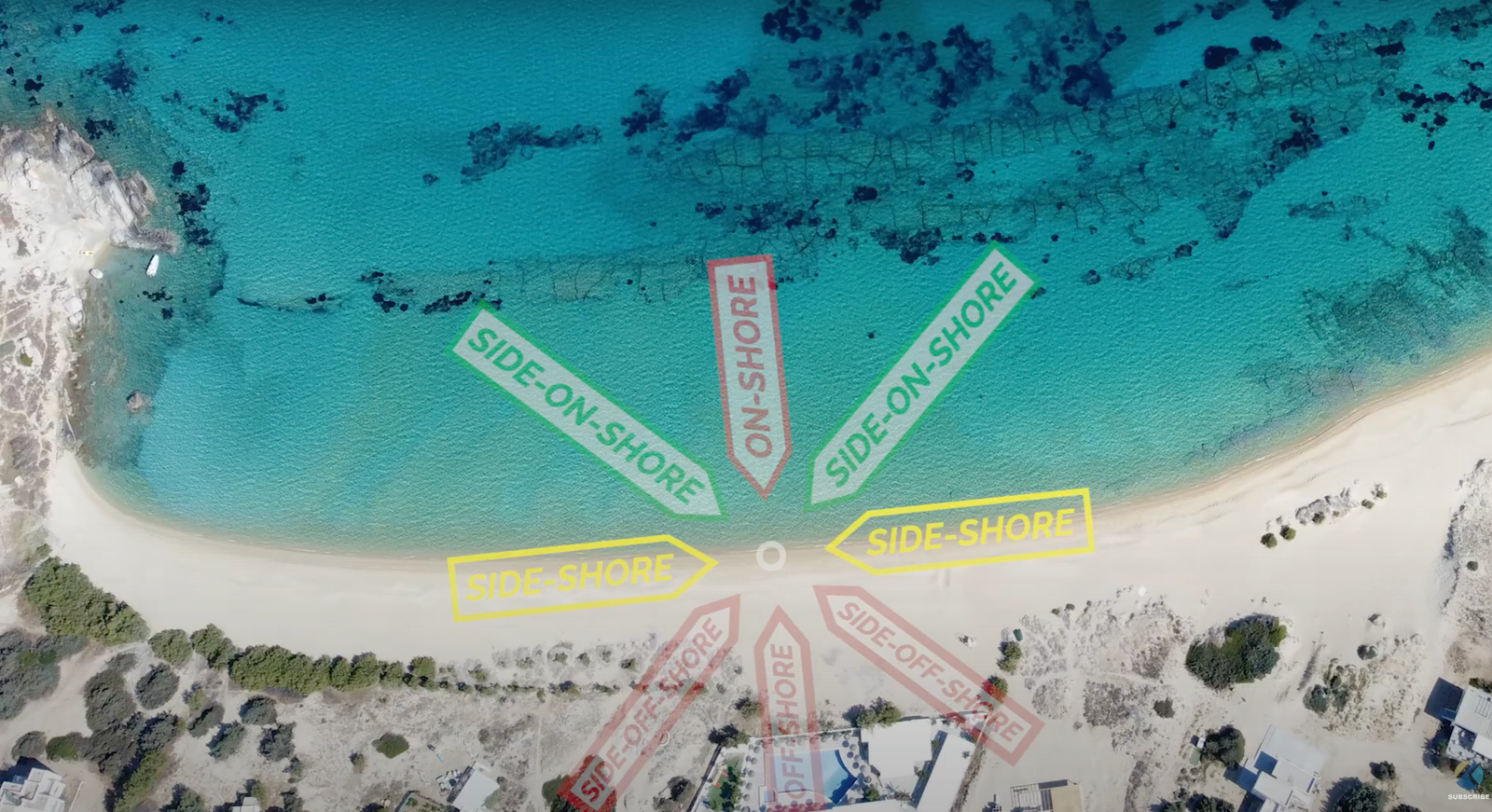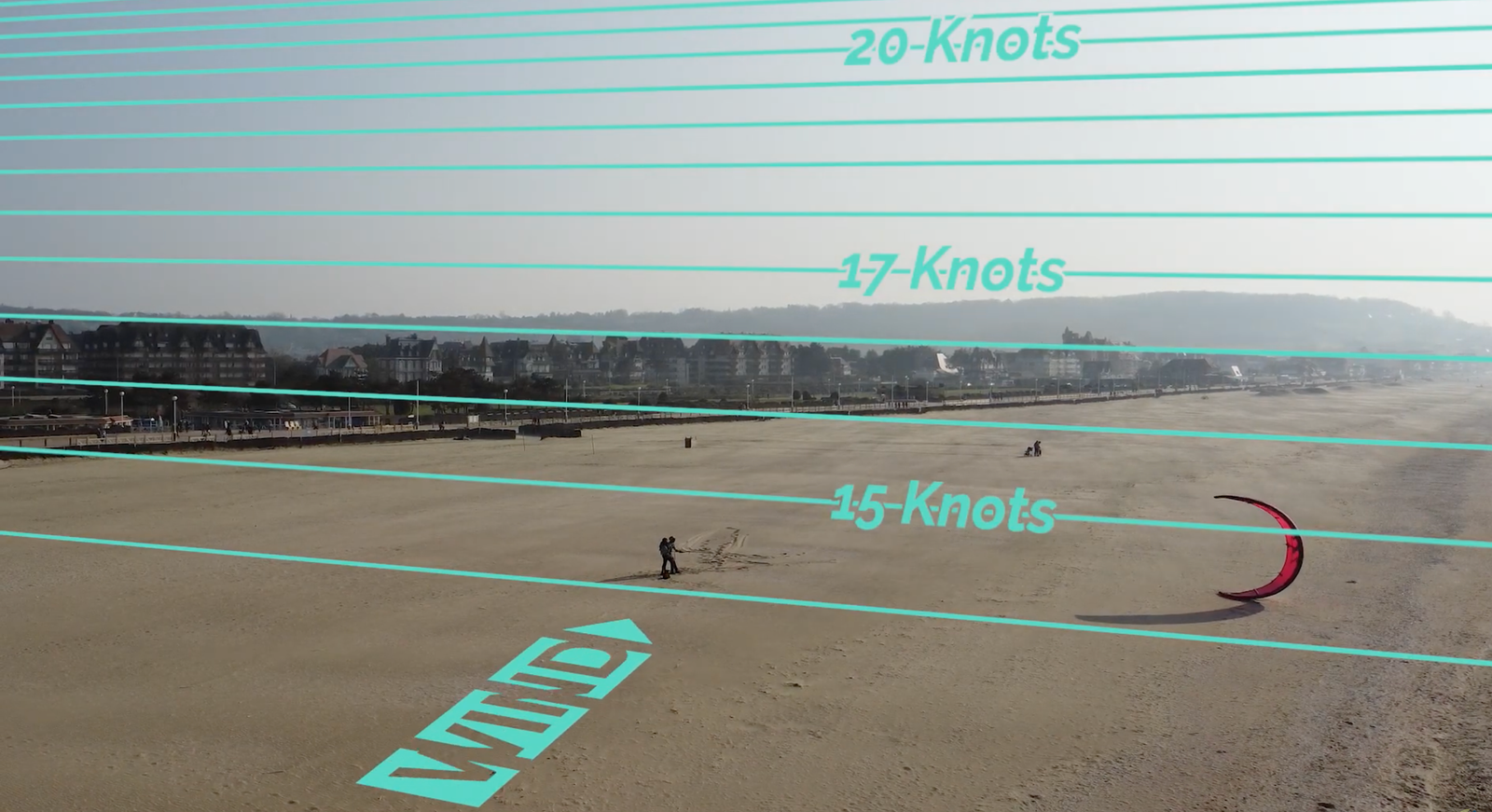WIND DIRECTIONS AND WIND EFFECTS IN KITESURFING
Wind is definitely the key element in Kitesurfing. It is really important to understand the safest wind direction for practicing kitesurfing, but it is also necessary to know what wind effects to expect on different kitesurf spots.
In this post discover all the basics about the wind system every kitesurfer should be aware of in order to stay safe.
For many years I didn’t check the exact wind direction before pumping my kite or before launching my kite and this was a big mistake.
WIND – MOST IMPORTANT ELEMENT FOR KITESURFING
If you don’t know enough about the wind, it may ruin a lot of your kitesurfing sessions. My name is Petar Pavlovic, I love sharing my Kitesurf Experience with you and in this episode we will go through every kind of wind direction and see all the wind effects any kitesurfer should be aware of.
The first thing you have to understand about the wind is that it is never the same.
It can be:
- strong
- light
- constant or
- gusty which means unstable.
In addition, it depends a lot from which direction the wind is coming from.
Do you check the direction of the wind before pumping or launching your kite? I was not doing it for so many years and this was a big mistake.
So what are the technics to find the exact wind direction?
- My favorite one is to turn my face into the wind direction and once I hear the wind in both of my ears I know I’m watching in the exact wind direction.
- You can also find the wind direction by watching the flags if there is any or
- with some sand if you are on a sandy spot.
SAFEST WIND DIRECTIONS IN KITESURFING
Let’s see what is the safest wind direction for kitesurfing and why other directions are not so safe.
SIDE ONSHORE
Wind blowing from the sea towards the shore but a bit from the side.
This is the safest wind direction you can easily ride left and right, down wind and up wind and whatever happens the wind will bring you back to the shore.
SIDE SHORE
Wind blowing parallel to the shore. This direction is also quite safe, again you can easily ride in whatever direction, but if you have a problem far from the beach the wind might not push you so quickly back to the shore.
ON SHORE
Wind blowing from the sea directly to the shore.You should be able to ride immediately upwind, which in most cases, is really difficult because of the waves or current. Also if you do just a small mistake close to the beach, this is definitely not safe.
OFFSHORE & SIDE OFFSHORE
Wind blowing from the shore towards the sea. I think that everyone can agree, that offshore wind is not safe for practicing kitesurfing. If something happens, the wind will push you away from the beach, probably in the open sea.
If this is the only way for you to enjoy kitesurfing there must be a rescue boat.
Keep in mind that on most offshore spots the wind is becoming unstable, which makes it even more challenging for you to stay upwind.

WIND EFFECTS EVERY KITESURFER SHOULD BE AWARE OF
WIND GRADIENT
Closer to the surface the wind is light and unstable. Higher we go the wind is getting stronger and more stable

WIND SHADOW
Whenever the wind is blowing over an obstacle, the wind will become unstable or there will not be wind at all. Sometimes you can even see it on the forecast.
Downwind of the obstacle the wind will be gusty for approximately 7 times the height of the obstacle. And upwind of the obstacle for approximately 3 times the height.
This also depends a lot on the wind speed : If the wind is light it will not be windy downwind from the obstacle for a long distance and further down wind will appear small gusts of wind. If the wind is strong it is possible to feel the wind immediately downwind of the obstacle. It will also create gusts of wind which you can still feel even after a long distance away from the obstacle.
SHAPE OF THE OBSTACLE
The shape of the obstacle will create different gusts. For example if there are trees or houses it will create quite strong turbulences. But if there is only sand dunes, the turbulences will not be so aggressive.
Whenever you see that the wind is blowing over some big obstacles as mountains, buildings or else, you want to avoid riding right downwind from them.Your kite would not fly properly and might even stay completely without wind.
It is also very important to understand that downwind of any kind of obstacle is not the safest for launching and landing your kite.
Always keep as much as possible your distance from any obstacle. Even small bushes might bring you problems while launching or landing your kite.
Even if you are up wind from an obstacle that is right in front of you, you can feel that the wind is unstable. When the wind is hitting the obstacle it bounces back and this creates turbulences. Most of the time this is also leading to compression effect.

COMPRESSION EFFECT
Like we said before when the wind hits an obstacle it creates turbulences. But the wind will also follow the shape of the obstacle, so on top of this obstacle the wind will get compressed, meaning it will get stronger.
This is why it can be dangerous launching your kite right up wind from any kind of obstacle. Also you have to be aware that if you are riding and your kite is over an obstacle like rocks or over a beach, you will feel more wind, which sometimes can be helpful if it’s light wind but it can also be dangerous if the wind is already strong because of this compression effect.
You can see clips of kiters floating around dunes, by the way, this effect is used a lot by para-gliders.

VENTURI EFFECT
When the wind is blowing between two islands or big mountains, the wind will be compressed so it will get stronger.
Sometimes on the forecast you can see that the wind is getting stronger between two obstacles.
But in many places, with light wind direction, the forecast will not show the real strength of the wind. I experienced this on Naxos Island. On the opposite side of the spot is Paros Island. The forecast is showing 8 knots but there is actually 15 knots.
If you decide to do a downwinder you have to be aware of the « venturi » effect. Let’s say if you start from the up wind part of two islands there will be one strength of the wind but as soon as you come exactly between two islands the wind could increase much more and could become dangerous if your kite is too big.
Also if you start a downwinder from the middle of the islands where the wind is quite strong, once you go further downwind and the wind is not compressed anymore, you might stay without enough wind to finish your session smoothly.

THE BAY EFFECT
This effect occurs when the wind is blowing side shore or side onshore towards the land with buildings or mountains. The orientation of the wind can slightly change and again the wind is compressed so it will increase. Same as for the Venturi effect, it can be an advantage in light wind conditions but a problem if the wind is already strong.
In this episode we saw just the basics of wind effects. The more you will kite the more you will know about it. Before riding on a new spot make sure to check with local kiters if there is any specific wind effect you should be aware of. Keep analyzing the wind conditions before your sessions. Respect the wind and have fun.





